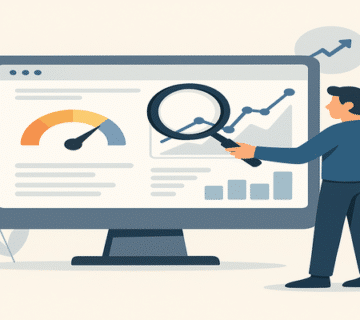How to Use Google Analytics to Analyze SEO Results
Introduction to Google Analytics and Its Importance in SEO
Google Analytics is an advanced tool designed to provide accurate and comprehensive data about visitor behavior on websites. It plays a crucial role in search engine optimization (SEO) strategies by helping users understand how visitors interact with their site content.
This tool enables businesses and website owners to regularly monitor site performance, allowing them to make informed decisions based on real data.
Google Analytics helps analyze several key aspects, including traffic volume, session duration, most visited pages, and bounce rate. These insights allow marketers to spot trends and identify areas that require improvement.
For example, a high bounce rate on a specific page may indicate that the content is not meeting visitor expectations—highlighting a need to update or enhance the page to improve its performance.
The platform offers a range of reports—Audience, Behavior, and Acquisition—that provide deep insights into visitor patterns. Users can track traffic sources such as search engines and social media, which enhances the ability to assess the success of various SEO efforts.
By understanding where visitors come from and which pages they interact with, site owners can continuously improve their content and user experience.
In conclusion, Google Analytics is a core analytical tool in SEO strategies. It helps provide a clear view of site performance and visitor behavior—ultimately improving user experience and boosting the effectiveness of digital marketing efforts.

Setting Up a Google Analytics Account for SEO Analysis
To begin using Google Analytics as an SEO analysis tool, the first step is to create a new account. Visit the official Google Analytics website and log in with your Google account—or create one if you don’t already have one.
Once logged in, follow the instructions to set up a new Google Analytics account.
During setup, you’ll need to create a property for each website or app you want to track. Be sure to enter accurate details such as the website name, URL, and time zone. Selecting the right property settings ensures precise data tracking.
Next, you’ll receive a unique tracking code from Google for the newly created property. This code must be installed on all your site’s pages to collect data correctly.
You can install it manually in your website’s source code or use WordPress plugins like MonsterInsights or GA4 plugins if you use WordPress.
To enhance the value of your data, enable conversion tracking. This allows you to set specific goals—such as user signups, purchases, or link clicks—which can be monitored to assess how well your SEO strategies are performing.
By following these steps, you’ll be ready to start effectively analyzing your website’s performance using Google Analytics.

Data Analysis: What to Look for in SEO Reports
Analytics tools like Google Analytics are essential for understanding website performance, particularly in relation to SEO.
The platform’s reports reveal multiple critical aspects of site traffic, enabling marketers and website owners to make data-driven decisions. One of the first metrics to watch is total traffic, which indicates how visible and appealing your content is in search engine results.
Another key metric is average time on page, which shows how long visitors stay engaged with your content. A longer time suggests that the content is valuable and relevant—positively influencing search engine rankings.
In contrast, the bounce rate—the percentage of visitors who leave after viewing only one page—is a red flag if too high. This may indicate the content or experience doesn’t meet expectations, which could harm SEO performance.
It’s also important to identify top-performing pages. This helps you understand what content is attracting the most interest so you can optimize those pages and develop similar content.
Additionally, tie the data to your keywords and traffic sources. Knowing which keywords are driving traffic and where visitors come from helps SEO professionals refine their strategies and improve organic reach.
Using Analytics to Make Decisions and Adjust Strategy
With increasing competition for top rankings, it’s essential to leverage data from Google Analytics to optimize SEO strategies.
The insights gathered empower marketers to make informed decisions about how to structure and enhance their website content. By analyzing the performance of top pages, you can uncover what drives visitor engagement.
Focus on elements like click-through rate (CTR), session duration, and pages per session to get a holistic view of visitor behavior. These indicators help identify content strengths and areas that need adjustment.
The bounce rate is another critical metric to review. If some pages have unusually high bounce rates, it could mean the content, layout, or user experience needs improvement.
Consider A/B testing elements like titles, images, or interactive components to test their impact on user behavior. These experiments can reveal what resonates most with your audience.
By continuously monitoring and interacting with the data, businesses can build stronger SEO strategies. This ongoing approach helps fill performance gaps,
enhances decision-making, and ultimately leads to better user experience and higher search rankings—giving your website a competitive advantage.





A must-have for anyone serious about digital marketing — Ahrefs makes SEO smarter, faster, and more effective!
Such a fresh take — this shows that real success in SEO comes from thinking long-term, user-first, and value-driven.